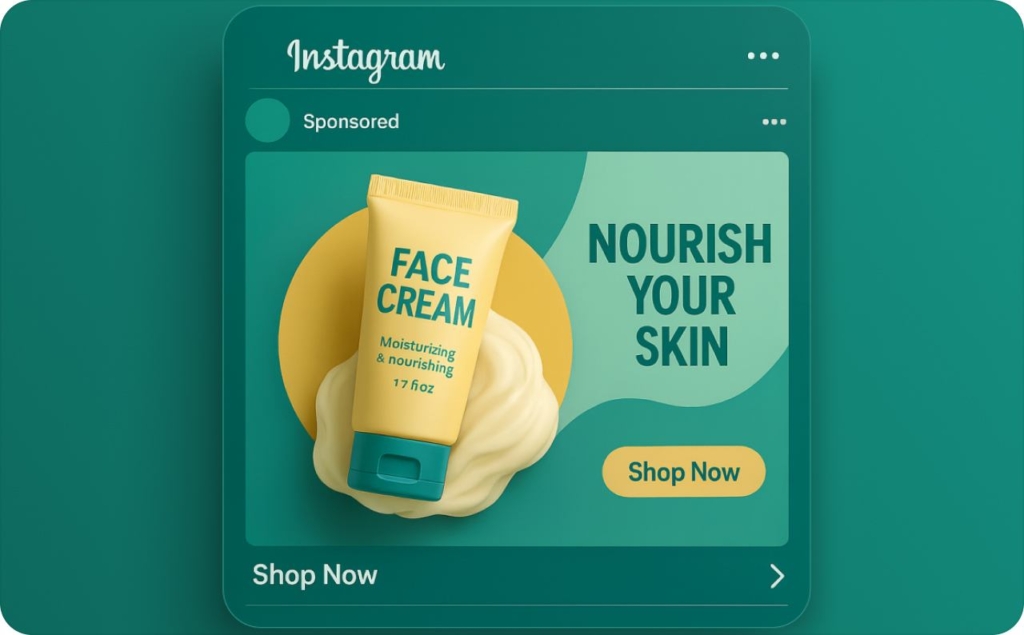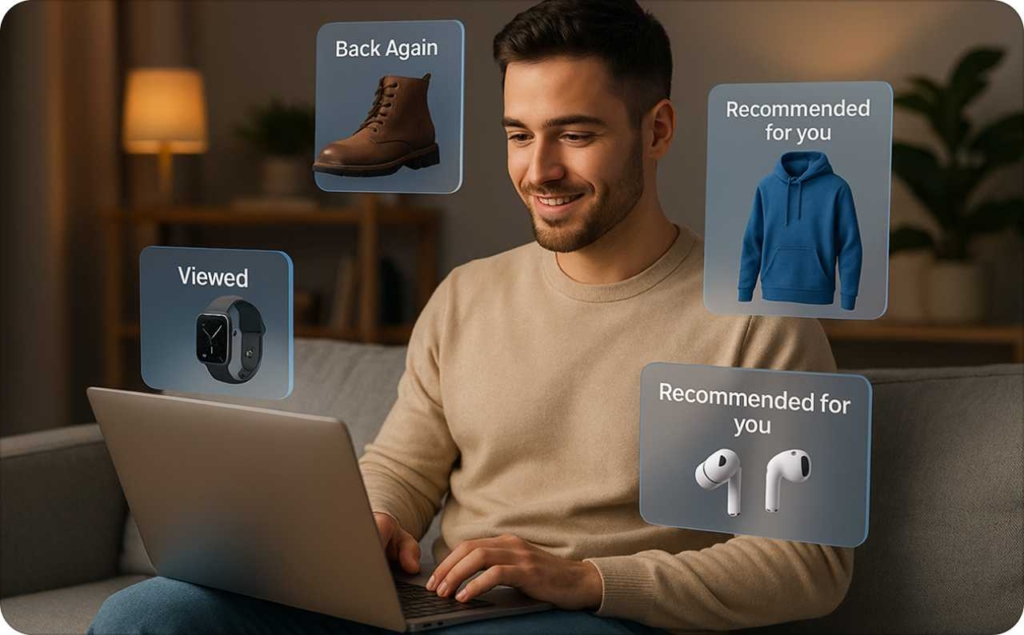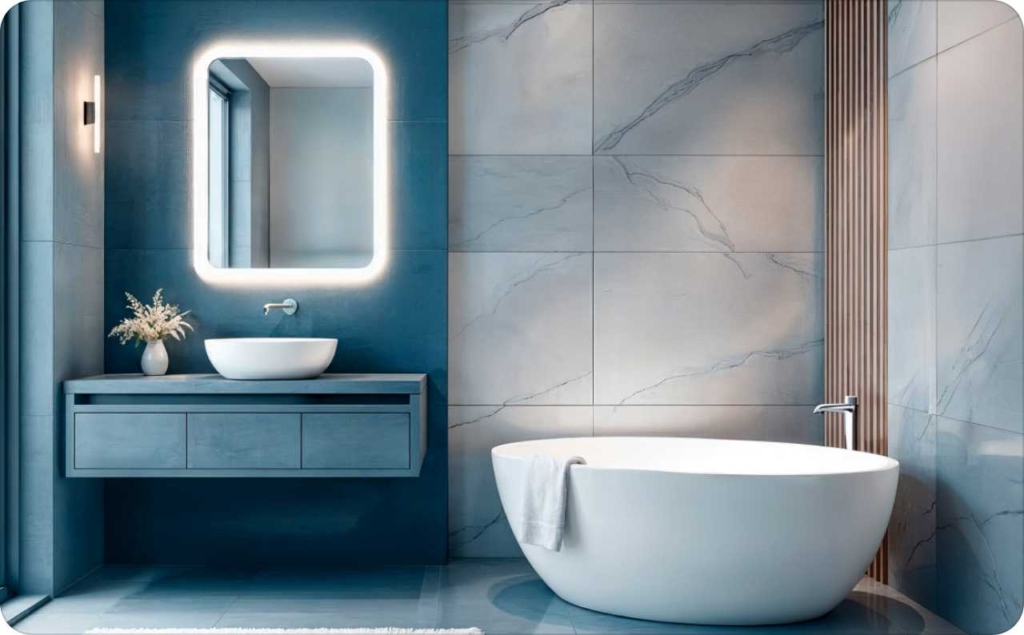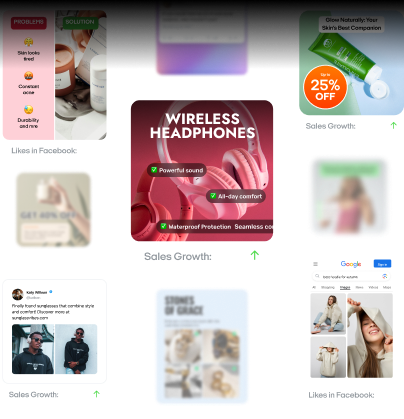Retail advertising: Overview and 4 steps to making it effective
Want to drive more in-store and online sales? Zeely AI breaks down retail advertising essentials and shares four proven steps to create campaigns that actually convert shoppers.
If your store isn’t getting the foot traffic or online sales you expect, your retail advertising strategy might be falling short. Whether you run a single boutique or a multi-location chain, how you promote your products directly influences customer behavior.
Retail advertising is the engine behind your promotions. It refers to the specific tactics retailers use to push products, services, and offers across both digital and physical spaces. Unlike brand advertising, which builds awareness over time, retail advertising is outcome-driven — its purpose is to move shoppers to act now, whether that means walking into your store or clicking “buy” on your website.
Modern retail advertising isn’t just about showing up; it’s about showing up smart. It blends traditional tactics like in-store promotions and visual merchandising, think shelf talkers, window displays, or branded endcaps, with digital retail marketing like Google Shopping ads, influencer content, and email campaigns. More importantly, the most effective strategies aren’t siloed — they’re integrated campaigns that create seamless, consistent touchpoints across every stage of the customer journey.
Retail marketing teams now rely on digital displays and real-time shopper insights to deliver experiences that feel personalized, timely, and relevant. A customer might discover a product on Instagram, get retargeted with an ad while reading the news, and finally visit your physical store to purchase. Each touchpoint builds momentum.
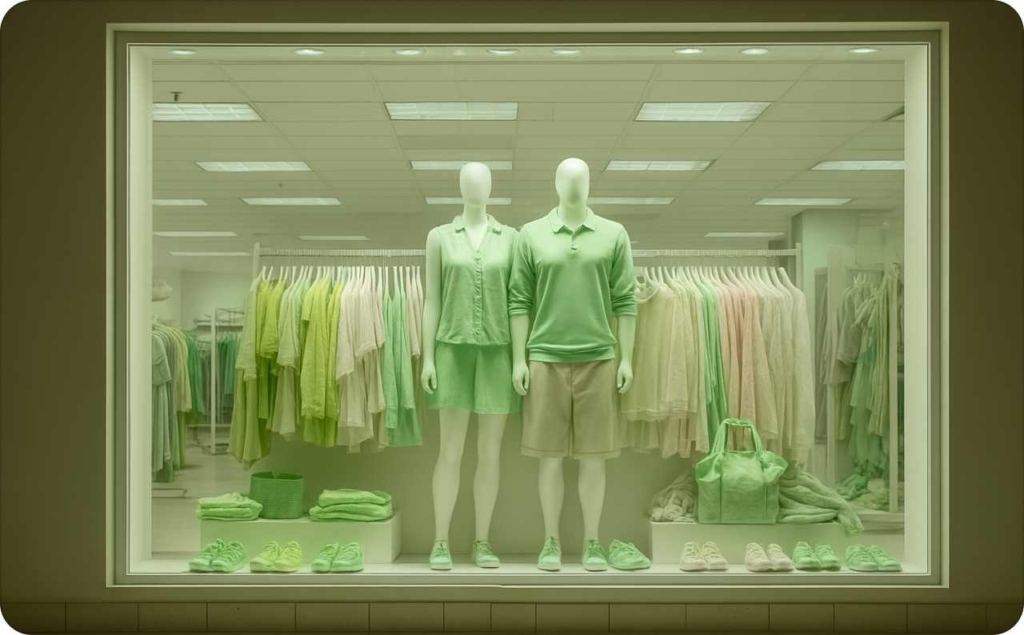
Types of retail advertising: Exploring channels and tactics
Now that you understand how retail advertising fuels customer acquisition and sales, the next step is choosing the right channels. The challenge? Retailers today face an overwhelming number of formats, each promising reach, engagement, or conversion. But not every channel fits every business.
To help you decide, let’s break down the core types of retail advertising: print, broadcast, digital, outdoor, and in-store. You’ll learn what each does well, when to use it, and how to align your choices with your goals and budget.
Print & broadcast advertising
Print advertising, including flyers, catalogs, newspapers, and direct mail — is tactile and personal. It’s a great fit if you’re running localized promotions, showcasing seasonal product lines, or building loyalty with existing customers. A boutique, for example, might mail a printed lookbook to VIPs ahead of a spring collection launch.
Print works especially well when your audience skews older or prefers offline shopping touchpoints. The budget here is flexible — small flyer runs can cost little, while full-page magazine spreads can stretch higher. The tradeoff? You won’t see instant performance metrics.


Broadcast advertising, on the other hand, offers broad, emotional storytelling. Think 30-second spots on regional TV, or quick-turn campaigns on local radio to announce weekend sales. These channels excel at generating mass awareness and trust — ideal if you’re launching a new store or brand campaign.
Best for: Local retailers, legacy brands, or stores looking to build community presence.
Effort/cost: Moderate to high setup effort, medium to high cost, wide reach.
Digital & outdoor advertising
Digital advertising gives you control, speed, and measurable results. Even with a small budget, you can reach the right audience, test what works, and adjust in real time.
Use platforms like:
- Paid search to connect with people actively looking for your product
- Social media ads to build awareness and drive engagement
- Programmatic display to automate reach across the web
- Dynamic product ads to show the right product to the right person
You can start with just $20 per day and scale based on performance. Every click, view, and conversion is trackable—so you always know what’s working and where to improve.
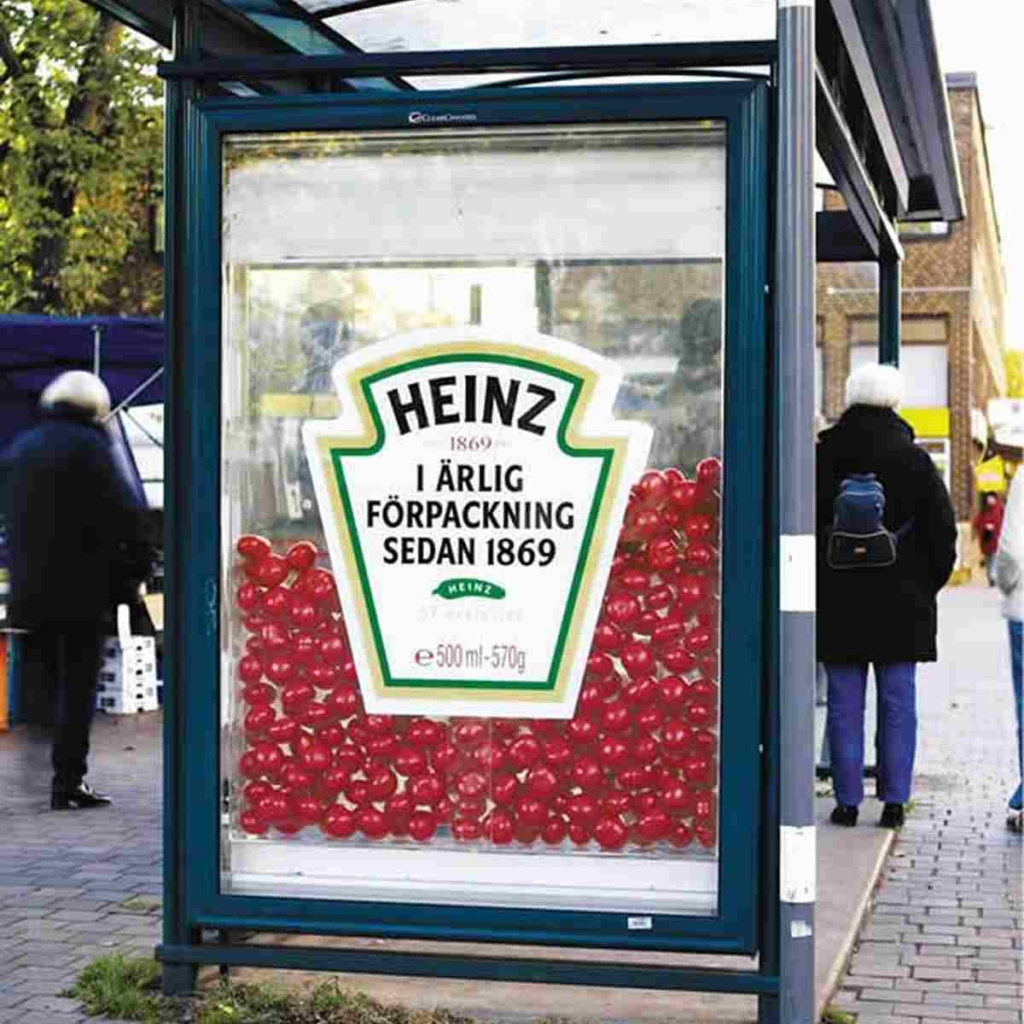
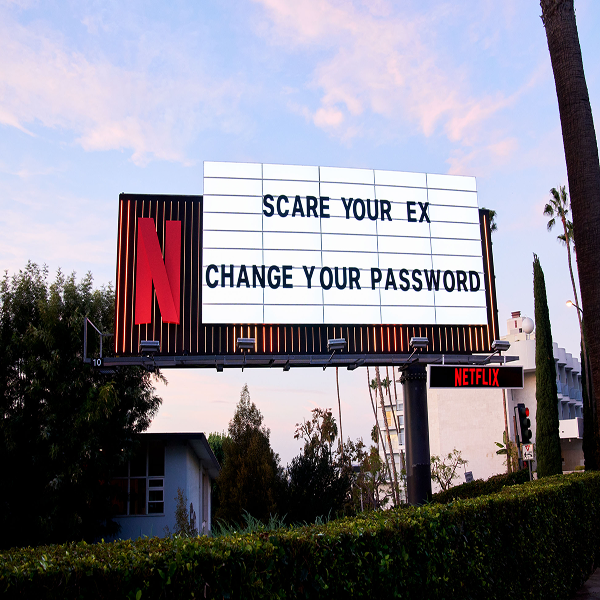
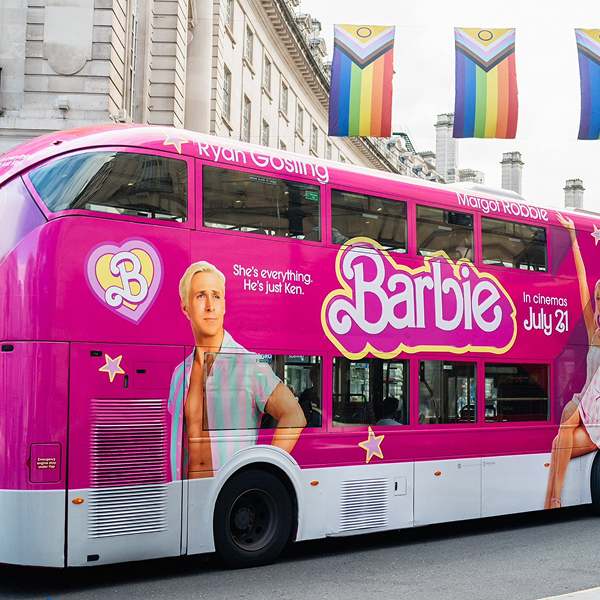
t’s a strong fit for:
- Ecommerce stores running product promotions
- Retail brands with fast-moving inventory
- Marketers who want to test, learn, and grow with data
Digital also makes it easy to personalize your campaigns. Segment by behavior, interest, or location. Run A/B tests. Launch, pause, and scale campaigns on demand—all from a single dashboard.
Best for: Ecommerce brands, local services, data-driven campaigns
Effort/Cost: Low setup, fast to launch, fully scalable with ROI-based control
In-store advertising
Your advertising doesn’t stop once the customer walks through the door. In-store advertising plays a critical role in shaping last-minute decisions and reinforcing earlier touchpoints. This includes everything from window displays and floor decals to POS displays and interactive digital signage like touchscreen kiosks or in-aisle screens.
Use static merchandising, like shelf talkers and branded product groupings, for everyday visibility. But if you want to elevate engagement, learn what display advertising is that adapt content in real time or spotlight time-sensitive offers. For instance, a grocery chain could use digital screens to cross-sell recipes near produce sections.
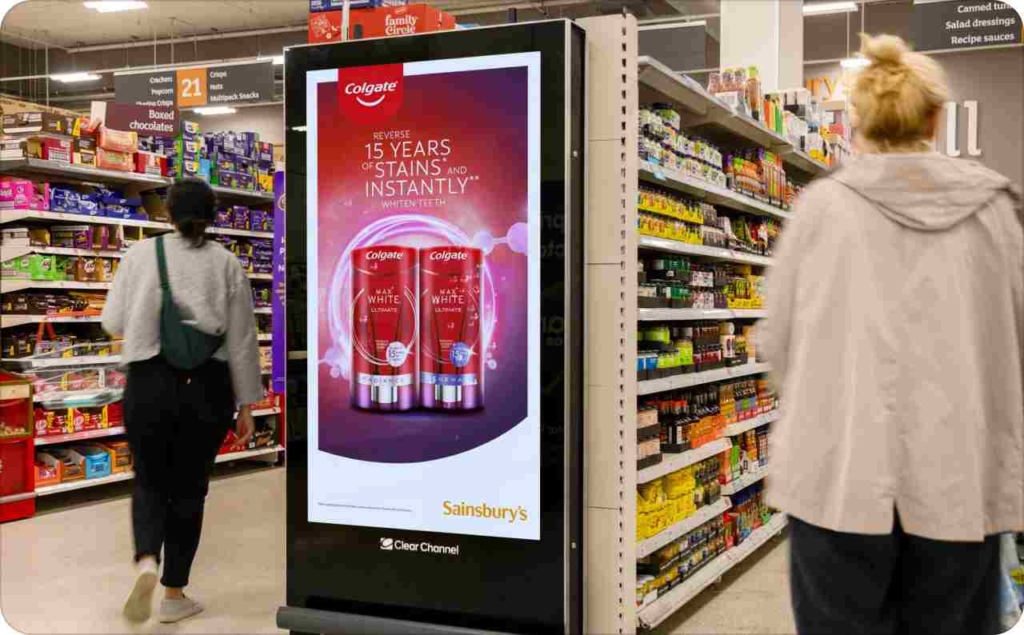
The key here is alignment. If you’re running a digital promotion, say, “25% off summer styles”, your store signage should echo that same message at checkout and on displays. This cohesion increases conversions and supports consistent customer experience.
Even better, modern POS systems allow you to measure in-store advertising effectiveness. You can track SKU performance, correlate sales spikes with ad exposure, and tie foot traffic data to marketing campaigns.
Best for: Brick-and-mortar stores focused on increasing basket size and driving impulse buys.
Effort/cost: Medium effort, low-to-medium cost, high intent engagement.
Wrapping up: Match channel to goal
Each advertising channel has unique strengths. Some are designed to capture attention, others to drive action, and others to reinforce decisions. What matters is not choosing one over the others, but building a mix that reflects your budget, customer habits, and goals.
Use print and broadcast for trust and brand storytelling. Choose digital for precision and real-time ROI. Go with outdoor to command attention. And let in-store advertising seal the deal when it matters most.
Retail advertising works best when your messaging flows between these touchpoints, from digital displays to window signage, with purpose, consistency, and measurable results.
Crafting a successful retail advertising strategy
A strong retail advertising strategy connects the right message with the right customer across every channel. It blends in-store promotions with digital campaigns, uses data to shape decisions, and tracks what drives actual results.
Here’s how to build one step by step.
Defining your target audience
To advertise effectively, you need to know who you’re talking to.
Start with basic data: age, income, location, and buying habits. Then go deeper. Look at how customers shop — do they buy online? Visit stores on weekends? Respond to flash sales? This mix of shopper behavior and demographics helps you create detailed buyer personas.
For example, a local beauty brand might find that Gen Z buyers respond to TikTok tutorials, while Gen X customers prefer email promos. That insight shapes not just the platform, but the message, visuals, and timing too.
Use tools like Google Analytics, POS data, or customer surveys to build these profiles. Once you segment your audience, test creative versions to find what works. Personalization starts here.
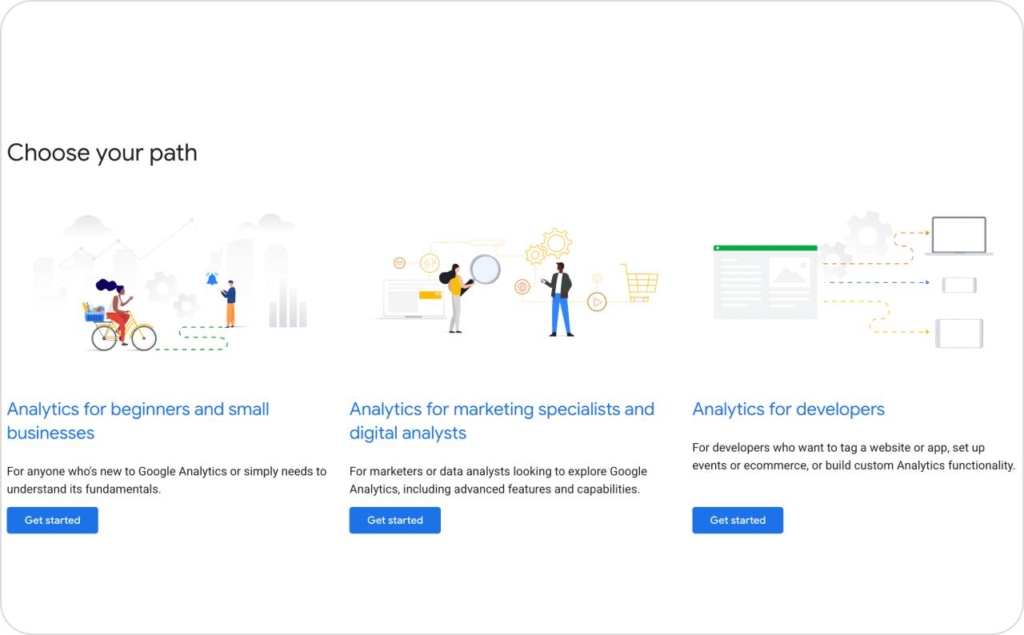
Photo source: Google Analytics
Real-world tip: Brands that align messaging with segmented personas see up to 3x higher CTR on email campaigns.
Positioning and value proposition
Once you know your audience, define what makes your brand stand out.
Your value proposition explains why customers should choose you. It’s not just “we’re high quality.” It’s “we deliver next-day, eco-friendly goods at better prices.”
Use competitive analysis to see where you stand. Are you faster? Cheaper? More sustainable? Find the angle that matters most to your customer, then express it clearly across every channel.
Let’s say you sell pet supplies. Instead of saying “trusted by pet owners,” say “Vet-approved toys shipped in 24 hours.” Specifics win trust.
Keep your messaging clear and consistent — in ads, emails, signage, and product pages. Your positioning strategy should be easy to remember and easy to prove.
Budgeting and promotional tactics
You don’t need a massive budget. You need a smart one.
Start by setting a goal. Are you driving foot traffic, growing online sales, or launching a new product? Let that guide your budget breakdown.
Split spending based on past results. For example, a small chain store might spend 60% on local print and radio, 30% on social ads, and 10% on in-store displays.
Choose promotional tactics that align with your goals. Want quick conversions? Try limited-time offers or flash sales. Want to increase average cart value? Offer bundles or BOGO deals.
Track everything. Use ROI metrics like cost-per-click, sales lift, and foot traffic. Run A/B tests to compare creatives or timing. That’s how you turn spend into insight and insight into better campaigns.
Pro tip: Brands that track both online and in-store conversions see up to 40% better budget efficiency.
Leveraging omnichannel marketing
Retail doesn’t happen in silos. A shopper might see your Instagram ad, check your site, and still walk into the store to buy. That’s why you need a true omnichannel strategy.
Start by syncing your message. What you show in-store should match your emails, social media, and paid ads. If your homepage says “30% off summer styles,” your window display should too.
Use tech to connect the dots. Link your CRM to your ad platform. Add QR codes in-store that lead to online reviews. Trigger email offers based on in-store purchases.
For example, Adidas ties together in-app browsing with store activity using Retail Media Networks. This lets them show personalized offers based on shopper history — online and offline.
Measure how these channels work together. Tools like Google Attribution and in-store footfall counters help you see what drives results across touchpoints.
Story snapshot: A furniture brand used geofenced mobile ads near high-traffic malls. Foot traffic rose 28% during promo weekends, and in-store sales jumped 17%.
Now that you’ve got the framework for retail strategy, the next step is execution. Up next: we’ll explore best practices and creative tips to bring your campaigns to life without wasting budget or losing customer trust.
Best practices & creative tips for retail advertising
Designing a retail ad that actually drives results, whether that’s more in-store foot traffic or higher online conversions, starts with a clear strategy and ends with smart creative execution. Whether you’re working with a print flyer or a dynamic banner on mobile, the core principles remain the same: clarity, consistency, and conversion-focused creativity
Designing retail ads that do more than look good
Great retail ads don’t just look good — they work hard. They tell a shopper exactly what to do, why it matters, and why they should care right now. Design isn’t just decoration. It’s strategy in visual form.
So before you open a design tool or drop in a product image, pause and ask:
What’s the goal of this ad?
Is it clearing seasonal inventory? Launching a new product? Driving urgency before a sale ends? When you lead with purpose, your creative choices become clearer. Every word, color, and image starts working toward that outcome.
1. The CTA isn’t the end — it’s the reason the ad exists
Retail ads often fall short because the CTA plays it too safe. “Learn more” sounds professional, but it doesn’t spark movement. If the CTA doesn’t make the next step obvious, people won’t take it.
Stronger CTAs are simple, but specific:
- “Shop the collection”
- “Get 20% off today”
- “Reserve your size”
These aren’t just better-sounding phrases — they perform better. Action-oriented CTAs can lift click-through rates by up to 45%, which directly impacts how quickly you move product and recoup ad spend.
If you’re running upper-funnel campaigns, lead with curiosity (“Explore new arrivals”). For retargeting, go direct (“Buy now before it’s gone”). One ad doesn’t fit every audience, your CTA shouldn’t either.
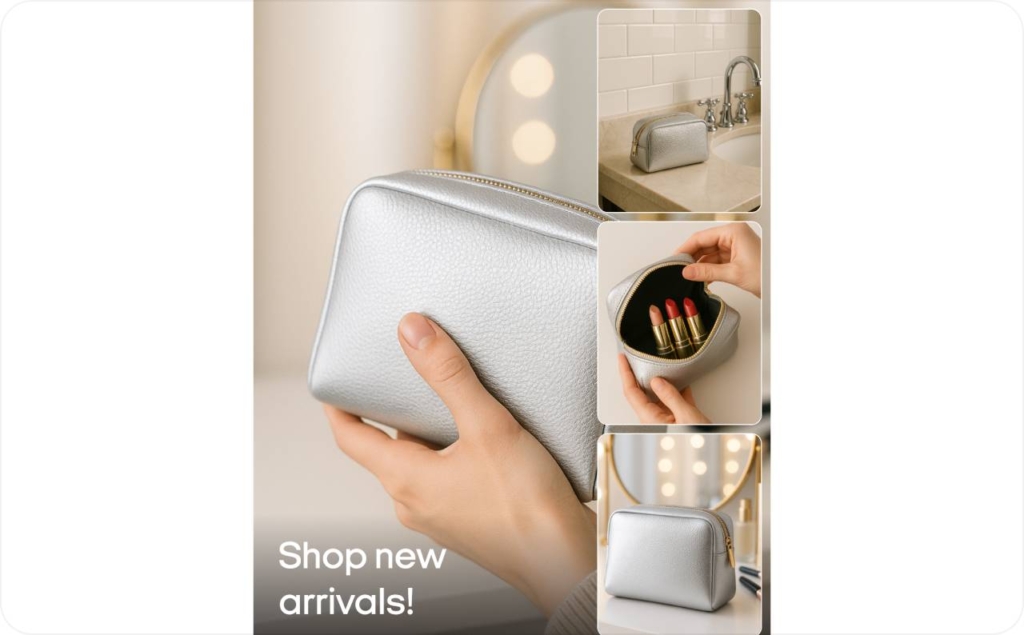
2. Visibility beats polish every time
In a crowded scroll, people don’t read ads — they scan. If your copy fades into the background or your font’s hard to read, you’ve already lost them.
Prioritize legibility:
- Use sans-serif fonts online
- Choose high-contrast color combos (no beige on white)
- Guide the eye with clean, simple hierarchy
In one A/B test, a retailer swapped a neutral beige-on-white layout for black-on-yellow. The result? A 27% jump in engagement. Visibility isn’t a design trend — it’s performance strategy.
3. If it doesn’t work on mobile, it doesn’t work
Mobile isn’t the second screen anymore. For most retail shoppers, it’s the only screen. Over 70% of browsing starts on smartphones, which means your ad has to be built for vertical, thumb-driven spaces.
Make sure:
- The creative loads quickly
- Text and buttons are easy to tap
- The format fits Stories, Reels, and Shorts
- Every element is focused and fast to absorb
If your ad slows someone down or feels cramped, they’ll scroll past — no matter how good the offer is.
4. One size never fits all
Retail shoppers aren’t one audience — they’re many. First-time visitors, loyal customers, recent cart abandoners. Each group needs a different message, tone, and level of clarity.
That’s where smart segmentation shines. Tailor creative by:
- Audience type (new vs. returning)
- Offer relevance (loyalty perks vs. discounts)
- Intent level (discovery vs. urgency)
Designing this way doesn’t just improve performance — it builds trust. People are more likely to act when the ad feels like it’s speaking directly to them.
5. Make your ads feel like your brand — not like stock
When someone taps an ad, they should land in a world that feels familiar. That means keeping your brand visuals tight across every touchpoint — social, display, email, in-store.
Consistency builds confidence. If your ad and website feel like two different brands, you’re asking the shopper to start over. Instead, mirror your store experience:
- Show products the way they appear on your shelves
- Stick to your brand’s lighting, tone, and styling
- Keep it cohesive from click to checkout
When the ad looks and feels like your brand, trust builds faster — and so do conversions.
A/B Testing and optimization
Publishing an ad feels like crossing the finish line. You’ve put in the work — great visuals, strong copy, a smart CTA. You hit launch. But here’s the thing: this isn’t the end. It’s the starting point.
Because even the best-looking ad is just a theory until it meets your audience. What happens next? That’s where the real insight begins.
Every campaign is a test — whether you plan It or not
When you run an ad, you’re already testing something. The difference is whether you’re learning from it.
That’s why intentional A/B testing matters. It’s not about being perfect — it’s about being curious. What headline pulls more clicks? Which CTA makes someone stop scrolling? How much impact does a product image really have?
You don’t need to overhaul your creative. Just shift one thing at a time:
- Headline A vs. headline B
- “Shop Now” vs. “Step Into Comfort”
- Product angle vs. lifestyle shot
In one campaign, a footwear brand swapped out a generic CTA for a value-driven one — and conversions jumped by 18%. No redesign. No extra budget. Just better alignment with what the customer actually cared about.
Let your tests breathe
It’s tempting to jump to conclusions when early results come in — especially if one version looks like a clear winner after day two. But quick data isn’t always true data.
Use whatever tool you’re already comfortable with:
- Meta Ads Manager
- Google Ads Experiments
- Or even lightweight testing through your email platform
The key is patience. Let the test run for at least two weeks, or a full sales cycle. Give your audience time to interact, click, bounce, and convert. Only then will the patterns be worth acting on.
Scale testing without burning out
If you’re running multiple campaigns, testing can get overwhelming fast. That’s where Zeely steps in.
Zeely doesn’t just help you design — it helps you learn. It uses AI to spot what’s working across your creative library and recommends high-performing combinations based on your actual results. Think of it as your creative testing partner — fast, data-smart, and always optimizing behind the scenes.
It’s how you keep your ad engine running without putting extra pressure on your team.
You’re not just optimizing creative — you’re learning your audience
The goal isn’t to find the perfect ad. It’s to understand why something resonates. When your audience responds to a certain message or layout, it’s not just a win — it’s a signal.
A/B testing gives you those signals. Over time, you start to see what your audience values. What motivates them. What makes them act.
And when your creative reflects that? Your performance doesn’t just improve — it compounds.
Create retail ads with AI ad generator
Retail marketers and ecommerce brands need high-performing creatives — fast. Zeely’s AI ad generator empowers you to create scroll-stopping static and video ads in minutes using advanced tools built for growth, conversion, and scale.
Whether you’re launching a new product, testing seasonal campaigns, or scaling across platforms, Zeely handles the heavy lifting. With this powerful ad creator, there’s no need for design skills, production teams, or outside editors. You just focus on what matters: results.
Benefits
- Faster ad creation. Generate static ads in seconds and video ads in under 7 minutes
- Higher conversion rates. AI-optimized creatives boost CTR, purchases, and ROAS
- Lower production costs. Eliminate the need for actors, designers, or editors
- Cross-platform reach. Launch ads tailored for Facebook, Instagram, TikTok, YouTube, Etsy, Amazon, and more
- Smarter testing. Easily A/B test up to 20 ad variations per product with batch generation
Features
- 100+ ready-made templates for static and video ads, regularly updated for performance
- AI-powered copywriting for titles, descriptions, and CTAs using proven sales frameworks
- 150+ lifelike AI avatars and dynamic transitions that enhance video engagement
- Editable ad builder with tools for image cropping, background removal, and color scheme customization
- Seamless Meta integration to launch directly on Facebook and Instagram
- Custom script generator using AIDA, PAS, 4U, and more for powerful video storytelling
Price
Zeely offers flexible, affordable pricing plans tailored for ecommerce sellers, startups, and scaling brands. Every subscription includes access to both the static ad maker and video ad generator, AI avatars, ad templates, and publishing features — all at a fraction of traditional production costs.
Pricing starts at $29.95/month. Higher plans unlock more creative capacity, video generation credits, and advanced features.
Why choose Zeely AI
Zeely is built specifically for ecommerce and retail. Unlike generic ad tools, it combines AI-driven automation with marketing strategy to help you create ads that convert — not just look good. Whether you’re a solo founder or growing a multi-channel brand, Zeely gives you the tools to build high-impact ads without bottlenecks or creative delays.
Real-world examples and case studies
If you’re wondering what really drives retail advertising success in today’s omnichannel world, the answer lies in data-backed creative execution. Many marketers still struggle to bridge the gap between digital innovation and physical store experiences — yet top brands like Adidas, IKEA, Pottery Barn, and Sephora are proving that with the right strategy, measurable results follow.
Let’s break down what makes these campaigns stand out — how they integrate digital and in-store tactics, target audiences precisely, and generate both brand lift and conversions.
Successful campaigns from top brands
Retail advertising is no longer about choosing between online or offline. The most effective campaigns, like those run by Adidas and Sephora, blend both worlds seamlessly.
Adidas: Real-time personalization at scale
To drive product discovery for Gen Z, Adidas launched a hyper-targeted retail media campaign during the back-to-school season. Partnering with a major retail media network, they served dynamic display banners across mobile and in-store digital signage based on real-time inventory and shopper behavior.

Photo source: Stephen Paff – Adidas ‘’Back to School’’ campaign
Result? A 27% increase in product views and 18% lift in purchase intent, according to internal campaign analytics. The creative featured bold typography, a single strong CTA, and localized imagery that resonated with specific metro areas.
IKEA: Sustainability as brand currency
IKEA’s “Buy Back Friday” campaign flipped Black Friday on its head. Instead of pushing new purchases, they invited customers to return used furniture for store credit. Their omnichannel promotion included:
- Interactive in-store displays
- Paid social ads with sustainable messaging
- Influencer partnerships highlighting reuse
The result? A 4.2% increase in foot traffic and 2x higher engagement rates on Instagram versus typical promotional campaigns.
Sephora: Mobile-first beauty journeys
Sephora took mobile optimization to the next level with its “Swipe to Try” AR lipstick try-on campaign. By integrating augmented reality into its app and paid ads, they allowed shoppers to test shades virtually.
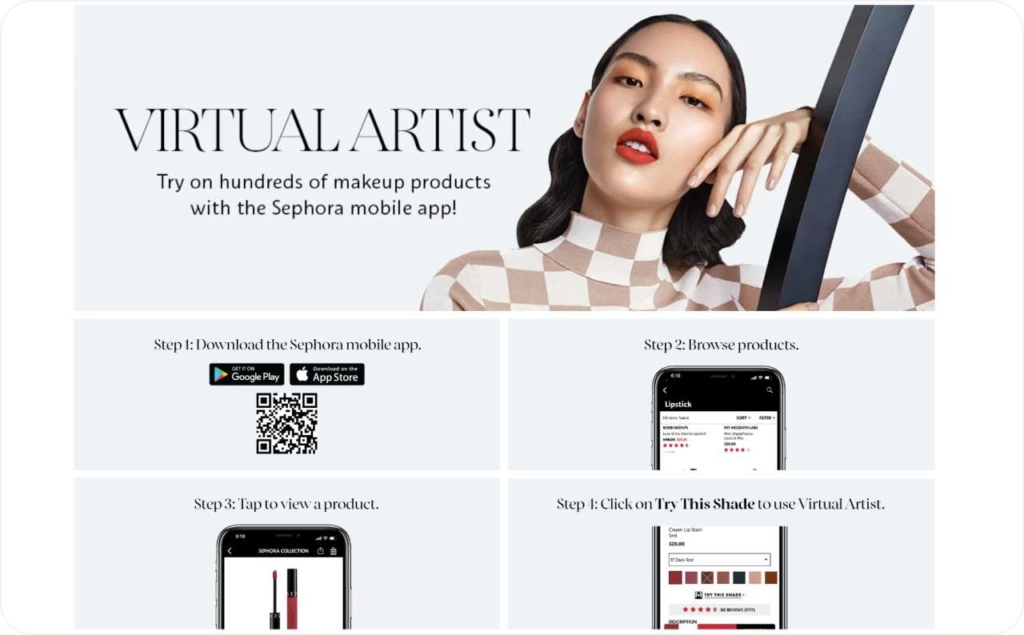
Photo source: Sephora
Performance-wise, the campaign delivered a 29% higher ROAS than previous mobile ad campaigns, along with a 3.6% in-store sales lift in locations where AR was also demoed on displays.
Pottery Barn: Storytelling that sells
To boost seasonal sales, Pottery Barn launched a “Home for the Holidays” campaign that merged digital storytelling with in-store events. Their content-rich Instagram ads featured real families decorating their homes, while local stores hosted themed workshops.
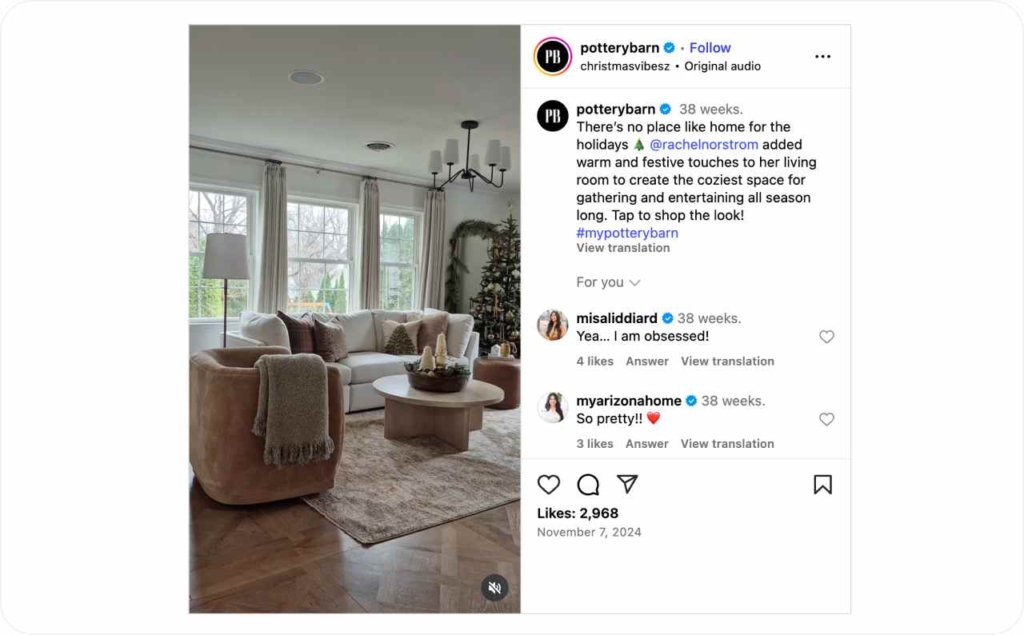
Photo source: @potterybarn on Instagram
What worked? The use of user-generated content drove authenticity, resulting in a 21% boost in website dwell time and a 12% lift in foot traffic during the campaign window.
Now that we’ve explored what top brands are doing right, let’s unpack the mechanics behind their success.
Analysis of what makes these ads work
What do all these campaigns have in common? It’s not just great design — it’s the strategic layering of creative precision and performance tracking.
Design & creative composition
Each campaign used clear, mobile-friendly visuals and strong brand consistency. Adidas leveraged dynamic banners that aligned perfectly with inventory. IKEA combined visual merchandising with narrative sustainability. In every case, typography and layout guided the eye to a direct call-to-action.
Audience targeting & segmentation
Sephora and Adidas deployed customer data to tailor creative by persona and context. Whether you have targeted digital advertising by location, device, or behavior, their creative was never generic — it was situational and personal.
Performance metrics that matter
Across campaigns, success wasn’t left to chance. Brands measured:
- ROAS and conversion rate
- Foot traffic and engagement
- Time-on-site and scroll depth
These weren’t vanity metrics, they guided ongoing optimization. For example, Sephora used scroll data to redesign the layout mid-campaign, increasing engagement by another 14%.
Technology integration
From augmented reality to retail media automation, technology is no longer a gimmick — it’s a driver of relevance and results. Brands like IKEA leverage in-store QR code prompts to seamlessly connect offline discovery with online inspiration, while Sephora’s AR-powered try-on tools create immersive, personalized experiences that lead directly to purchase.
Now, with tools like an AI display ad creator, these experiential moments can extend even further — automatically generating visually stunning, high-converting ad creatives that mirror what shoppers love in-store. Whether triggered by user behavior, purchase intent, or visual trends, AI-powered ads ensure that every impression feels tailored, dynamic, and actionable.
Key takeaways for your strategy
If you want to replicate these results, consider:
- Investing in creative testing platforms that support dynamic visual optimization
- Designing mobile-first creative backed by performance data
- Leveraging omnichannel assets — digital ads should echo in-store displays
- Prioritizing real-time personalization via retail media networks or your own CRM data
These examples prove that great retail advertising isn’t guesswork, it’s design, data, and execution working together.
Conclusion
Retail advertising is shifting fast and standing still means falling behind. You’ve seen how effective campaigns blend strong creative, smart targeting, and seamless digital-to-store experiences. Now, it’s time to act.
Start by evaluating your current efforts. Which ads are driving results? Where are you losing engagement? Use campaign analytics to uncover what’s working and what needs improvement. Focus on refining your creative — make sure your visuals pop on mobile, your CTAs are clear, and your message speaks directly to your audience.
Then, optimize across channels. Customers don’t separate online from in-store and neither should you. Build a consistent experience that follows them across touchpoints. Brands like IKEA and Sephora succeed by making every ad, sign, or digital banner part of a bigger story. You can too.
Looking ahead, prepare for what’s next: personalized ads powered by AI, immersive formats like AR, and sustainability-driven messaging. Staying ahead means testing new ideas, tracking performance, and adapting fast.
If you need guidance, work with a retail media expert or creative consultant to sharpen your strategy. Whether you’re launching a new campaign or revamping existing ones, expert insight can help you turn ideas into real results.
Use what you’ve learned and start building retail campaigns that connect, convert, and grow.
Also recommended
